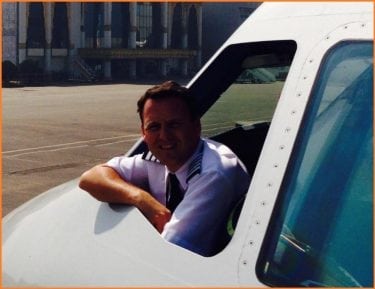
Colin Rydon, Vice President Training, Standards & Development/Head of Training (UK EASA ATO-475), L3Harris Commercial Aviation
Immersive Technology for Pilot Training and Operations in the Line Environment
Colin Rydon holds the regulatory position as Head of Training on the UK EASA ATO, a position held since June 2017. Responsible for all training across the Academy and Airline Training businesses, whilst driving forward training standards and development across the organization. In addition responsible for business development and exploration of data analytics whilst overseeing airline training operations in UK, Thailand and US.
Over his 20 year management career and 30 years flying experience, he has touched most functions of an airline and training organization. Having started flying with British Airways (BA) where he flew the B737, B757, B767, B747-100/200 and B747-400 aircraft. He became involved in all forms of pilot training and examining and was a TRI/TRE/SE on a number of aircraft. Being passionate about training and the desire to drive standards higher he became involved in management at BA. He held a number of different management positions at BA before leaving after 20 years’ service. Following BA he enjoyed a number of years at easyJet where he held a number of management roles whilst flying and training on the A320 as a TRI/TRE/SE. In 2013 he moved to Jetstar as Head of Flight Operations/Chief Pilot and completed his Hong Kong and Singapore ATPLs along with Hong Kong TRI/TRE authorizations. Colin returned to the UK as Director of Flight Operations at Flybe flying the Dash 8 turboprop, but managing a fleet of ATR, Bombardier and Embraer aircraft.
He is now delighted to be able to focus his energy on the next generation of commercial pilots and to look to help drive standards of commercial pilot training to the highest possible levels across the globe. During his career he has amassed over 10,000 flying hours and is still training and examining on the A320.
Immersive Technology for Pilot Training and Operations in the Line Environment
As immersive technologies advance, becoming more affordable and accepted, we must continue to explore how they can be leveraged to address procedure training, and other advanced skills, earlier in the training continuum. Tablets, virtual reality and augmented reality offer great opportunities for airlines and pilot training providers.
Ground school, and distance learning training, has largely been focused on systems knowledge with procedure training often being restricted by the number of paper tigers and advanced devices available to aid in developing muscle-memory and spatial awareness within the flight deck. Why be bound by device availability? Why not explore the use of immersive technology for procedure training via distance learning? And how can we best empower our students to learn when, where and how they desire? Through immersive technology, we can enhance training, improve training efficiencies for cost reduction, and develop tools that can be used to augment pilot flows and execution of normal and non-normal procedures in the line environment.
As the looming number of qualified pilots become increasingly critical, immersive technologies, and the improved training and on-the-job support they can provide, will be instrumental to help meet the growing needs of the industry. It will be crucial to attract the right talent to our industry, and using technologies that match now they learn, and play, will be key to our success.